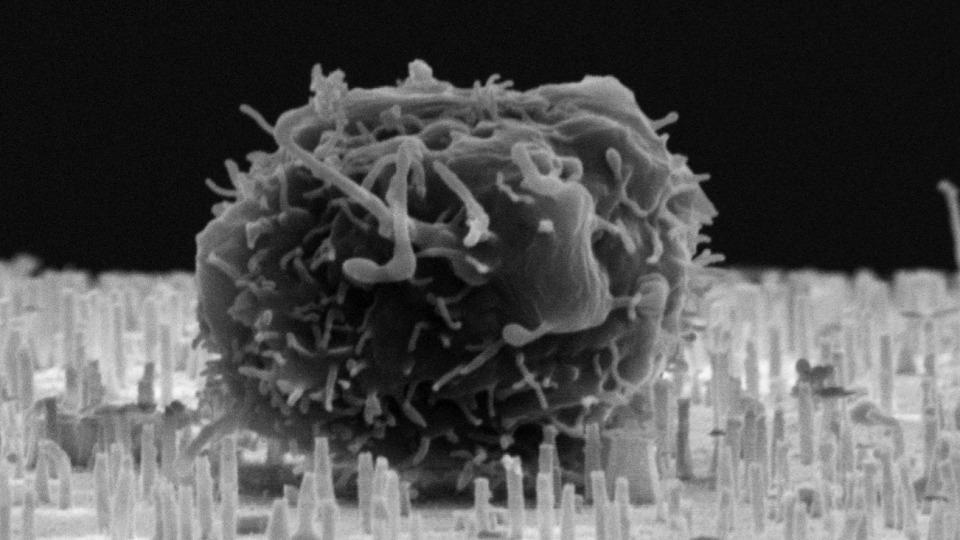An interdisciplinary research group has been successful in using innovation to resolve a major issue in stem cell research—more particularly, to introduce therapeutic biomolecules into target cells to raise their growth.
 Electron microscope image shows a blood stem cell on top of a membrane of nanotubes. Image Credit: M. Hjort and L. Schmiderer.
Electron microscope image shows a blood stem cell on top of a membrane of nanotubes. Image Credit: M. Hjort and L. Schmiderer.
Currently, the project has been awarded the “Proof of Concept” grant by the European Research Council (ERC).
Jonas Larsson, professor of molecular medicine, and his research collaborator Ludwig Schmiderer, jointly with Martin Hjort, a chemical biology researcher at Lund University, has engineered a method with the help of nanotechnology to increase blood stem cells before a stem cell transplant.
We built a layer of microscopic nanostraws. When the blood stem cells land on the membrane, the straws form a channel through the cell surface, enabling us to introduce the molecules we want into the cell.
Martin Hjort, Researcher, Chemical Biology, Lund University
To allow the delivery of molecules into cells, the present technique primarily utilizes powerful electrical fields which tear holes in the cell membrane, or genetically modified viruses that search for the cell and enter it, eventually leading to the release of the molecules. But these techniques have side-effects in the form of higher cell mortality and the threat of serious genetic changes.
In our previous studies from a recently completed ERC project, we succeeded in identifying a number of gene-regulating RNAi molecules that are very potent and cause a significant increase in the growth of blood stem cells.
Jonas Larsson, Professor, Molecular Medicine, Lund University
Larsson added, “Of course, we want to utilize these molecules to get the stem cells to multiply more effectively prior to a transplant. However, in order to make the process clinically sustainable, we had to invent a transfer method which is gentle on the cell. That is where nanotechnology comes in.”
The RNAi molecules are the ones that the scientists wished to introduce into the cell. These molecules were present under the layer of nanostraws. With the help of a weak electric impulse, which does not negatively affect the cell, the molecules are loaded into the blood stem cell via the tube that pierced the cell surface when the cell landed on the membrane.
Occasionally, there are no right donors or the number of stem cells achieved is inadequate to allow all patients with leukemia or hereditary blood diseases to get the transplant that could help save their lives. Hence, blood stem cells are saved for cultivation—from umbilical cord blood following delivery, for instance—and multiplied in the laboratory.
But blood stem cells are sensitive and new technology is required to allow them to be cultivated efficiently. The global market value for blood stem cell transplantation has been evaluated to surpass SEK 50 billion, so the research project has significant innovation potential.
It is incredibly exciting to combine nanotechnology with stem cell biology to develop a method capable of solving the problem of delivering therapeutic molecules into the cell without damaging it. Obtaining the ERC grant for this interdisciplinary concept is one step on the path to a new and more effective treatment for leukemia and hereditary blood diseases.
Jonas Larsson, Professor, Molecular Medicine, Lund University